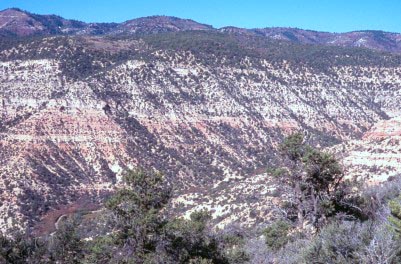The Monsoon climate of the Indian sub-continent could spread around the globe to Africa, North America, and South America, according to geologists at the University of Oregon who have studied an ancient greenhouse event.
Gregory Retallack and his team explain that the effects of global warming due to the greenhouse effect are likely to have a significant impact on climate, but their new results confirm that the contrast between the rainy season and the dry season could also increase dramatically in many parts of the world. The team has looked at the troubled, or stormy conditions, seen during the well-known greenhouse event of 55 million years ago, during the late Paleocene epoch. The researchers explored the relationship between seasonality and rainfall in soils, then applied the same techniques to buried soils spanning the ancient greenhouse event. Their results offer little comfort for those concerned about the impact of global warming.

The greenhouse effect in action
This is known to have been a time of high atmospheric carbon dioxide from studies of the breathing pores in fossil leaves, Retallack explains. At that time, the area now known as Wyoming warmed from a mean annual temperature of about 13 Celsius to a summer-like 18 Celsius. Concomitantly, rainfall in Utah jumped from 40 to 66 cm per year. As a result, sagebrush deserts of the western US were transformed into sub-humid woodlands. The late Paleocene greenhouse spike was caused not by the burning of fossil fuels, of course, but by the catastrophic release of natural gas (methane) from undersea ices and permafrost. It lasted a mere half a million years!
There are parallels with modern hydrocarbon pollution. This natural methane oxidized to carbon dioxide and created a global greenhouse event, Retallack explains. The past methane outburst dwarfed even human consumption of hydrocarbons. There is now a danger that another similar outburst could be triggered by warming of polar and submarine ice due to human activities. Our little warming push could repeat the troubled times of 55 million years ago, Retallack warns.

Gregory Retallack
During the greenhouse spike of 55 million years ago, tropical mangroves and rain forests spread as far north as England and Belgium and as far south as Tasmania and New Zealand, Retallack adds. Turtles, alligators and palm trees graced Ellesmere Island in the Canadian Arctic, which is now the treeless abode of musk oxen and polar bears. The bottom line? A new Ice Age is probably the least of our worries. Looks like we could see more re-runs of Monsoon Wedding and fewer views of The Day After Tomorrow.
Further reading
Geology, 2005, 33, 333-336
http://dx.doi.org/10.1130/G21263.1
Research Synopsis: Greg Retallack
http://darkwing.uoregon.edu/~gregr/
Suggested searches
monsoon
climate change